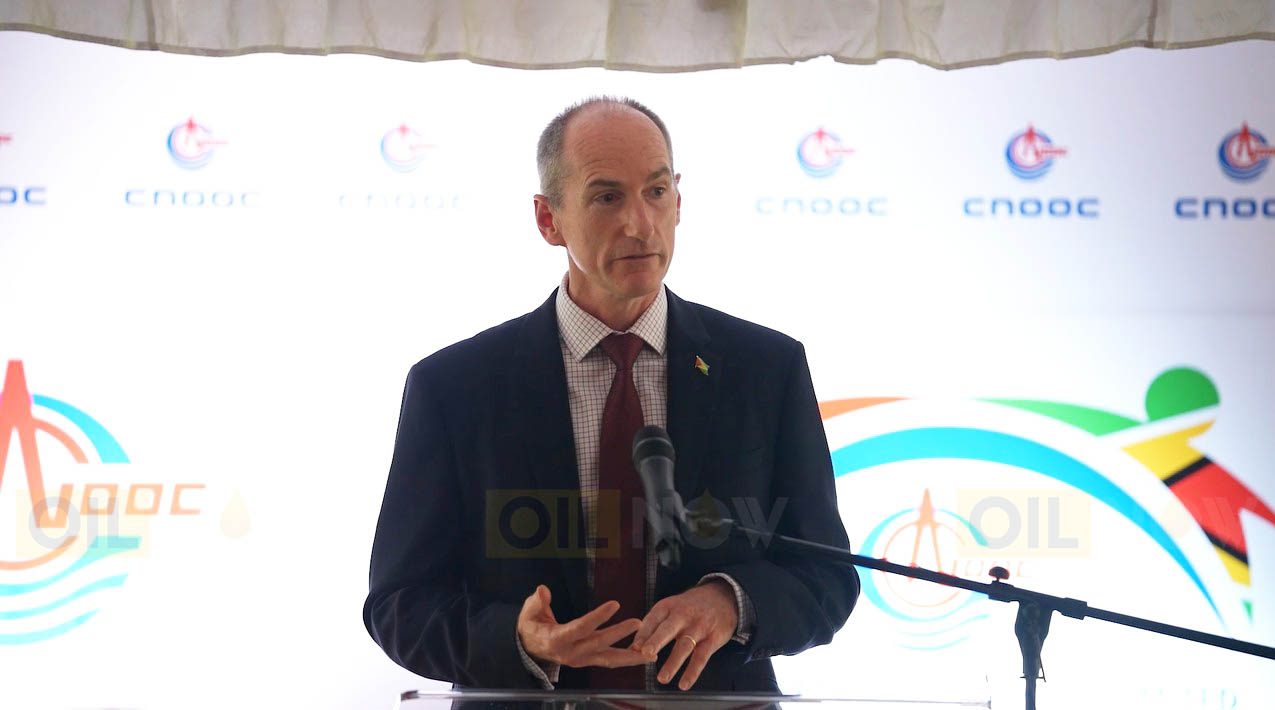In recent times, Guyana’s emergence as a deepwater oil producer is proving pivotal in helping reduce Europe’s reliance on Russian oil. This surge in Guyana’s production has been significantly influenced by the strategic investments of ExxonMobil in the country.
In a recent interview conducted in London during August, ExxonMobil Guyana President, Alistair Routledge, spoke positively about Guyana’s growth trajectory. He highlighted Guyana’s ability to produce oil with low emissions, its evolving domestic supply chain, and its efficient licensing process as significant strengths.
“We think in the 2028 time frame, the country’s producing over 1 million b/d on a regular basis,” Routledge told S&P.
He pointed out the key role Guyana’s Stabroek block, spanning 6.6 million acres, has played in providing crude barrels for Europe. The light sweet crude from this region, known as the Liza crude, has predominantly been directed towards European markets, especially following the Russia-Ukraine conflict and the subsequent sanctions on Russian oil. Notably, very little of this oil has been dispatched to US Gulf refiners. The quality of this crude is noteworthy too, with an API gravity of 32, and it was assessed by Platts, a segment of S&P Global Commodity Insights, at $91.19/b as of September 6.
In terms of future prospects, Routledge confirmed that the Payara field is scheduled to commence operations by the end of 2023, ahead of its initial plan. This will be facilitated by the Prosperity, a 220,000 b/d floating production, storage, and offloading vessel. With Guyana currently harnessing 400,000 b/d from two FPSOs, the induction of Payara will further augment this figure to 600,000 b/d. The projection remains optimistic, aiming for six projects to be fully operational by the close of 2027.
Adding to the developments, an environmental impact assessment (EIA) or the sixth venture, named Whiptail, was released in August. Following this, partner Hess announced that a subsequent field development plan (FDP) will be introduced in the year’s final quarter.
Drawing from the data and insights presented by S&P Global Commodity Insights, analysts predict that Guyana’s crude production could soar to approximately 1.16 million b/d by 2030, potentially reaching nearly 1.4 million b/d in the latter part of the 2030s. These numbers appear conservative, considering the capacities of the projects in ExxonMobil’s Stabroek Block pipeline.
ExxonMobil has solidified its commitment to Guyana by allocating $40 billion for its projects in the country, S&P said. Collaborating with its associates, Hess and China’s CNOOC, they continue to explore further opportunities. As mentioned by Routledge, among the six rigs presently in use, two or three are consistently dedicated to exploration and appraisal activities.
Routledge described the oil industry’s burgeoning impact on Guyana as “transformational.” For a nation of 800,000 inhabitants with an annual national budget of [US]$4 billion, the oil industry’s influence is undeniably profound.



